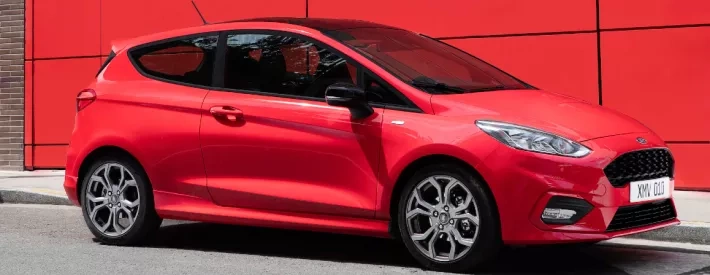Another year over: Five top stories from 2022

You could look back at 2022 and shake your head, (much like 2020 and 2021), but while there are lots of challenges, the historically robust and innovative automotive industry shows no sign of floundering. Here are some of the biggest events from a year in the automotive sector…
Russia invades Ukraine
Russia’s invasion of Ukraine has unsurprisingly sent shockwaves through supply chains and industries.
OEMs began pulling out of Russia (almost) as soon as the first bombs fell, with production and retail there grinding largely to a halt even among manufacturers that had been previously fully entwined with the country.
Ukrainian suppliers of components, particularly wiring harnesses, halted lines all over the world, while the industry’s reliance on Russia for minerals such as palladium and nickel was thrown into sharp relief by sanctions and logistical impossibilities.
The automotive industry’s vast, complex supply chain is profoundly fragile in places – arguably the key lesson from the post-pandemic age.
EVs go mainstream – and are taxed accordingly
Owners of battery electric vehicles, who had previously been exempt from vehicle excise duty, will have to pay “road tax” from 2025. Announced by the Chancellor of the Exchequer Jeremy Hunt as part of the autumn budget, this change was a long-anticipated mitigation of the planned phasing-out of fossil fuels – which have been a key tax source for several decades – but also represents a milestone in electric cars becoming mainstream.
Whether Britain is ready for this proliferation of electric cars remains to be seen. In addition to the anticipated shortfall of around 160,000 automotive workers, the IMI has highlighted a skills gap in EV-qualified professionals which it expects to manifest in 2026.
Electric vehicles are now well out of early-adopter territory, with hundreds of thousands now on the road, but the number of men and women available to work on them is not growing accordingly. Without a clear roadmap ahead, the industry risks losing itself in this unfamiliar new mobility landscape, but a picture of what still needs to be done is gradually forming.
COVID halves UK car production
Car production in the UK returned to growth in October, rising to over 69,000 units – a 7.4% year on year increase. But this is still 48.4% lower than October 2019, and around half of the October average before then. While numbers are now slowly heading in a more positive direction, the damage of the past two years is still nowhere near being fixed.
Much of the disruption stems from a global shortage of semiconductors, which has been a problem for years but which has been exacerbated further by the war in Ukraine and sanctions on Russia. It isn’t likely to be solved imminently, and industry leaders are predicting another year of disruption. But with production of EVs up by about a sixth, and November representing the fourth consecutive month of increasing car sales in the UK, there is some good news in among the headwinds.
Diversity in the automotive industry
In March, the IMI’s Diversity Task Force released its report on the automotive industry. Revealing some areas of success, as well as opportunities for significant improvement, the 100-page report is a fascinating and slightly sobering document that outlines how and why diversity is becoming a major focus for automotive businesses.
Aside from ethical considerations, inclusivity is good for business. Companies with women in c-suite are more likely to experience above-average profitability, while organisations with a similar outlook on ethnic and cultural diversity are better off still.
But outside the boardroom, the Diversity Task Force report highlights imbalances across all levels and all sectors of the industry, with clear progress required in gender, ethnicity, sexuality and disability inclusivity in almost every corner of the automotive world.
The Fiesta is over
The Ford Fiesta is retiring after nearly half a century of production and near-legendary sales figures all over the world. The genre-defining supermini has been immensely popular everywhere, but the UK in particular fell in love with the adorable and affordable hatchback. It’s been a part of Britain’s streetscape for as long as most of us can remember – but it’s inevitable demise is totemic of wider changes in the automotive world, both here and abroad.
To some extent it’s because people are buying SUVs instead (within the Ford microcosm, the Puma nibbles potential Fiesta sales, a trend reflected in a growing interest in small SUV-style models) but that’s a simplification. It’s not just about profits either, despite SUVs generally making more money for manufacturers than little runabouts. And it’s not all because of electrification, though the Vauxhall Corsa gaining ground on the Fiesta is fuelled in part by the battery-electric version available, which accounts for about 16% of sales. No, it’s about all of these trends and more. British car owners want and need different things, even compared with a couple of years ago, and the industry’s ability to react to these changes will in part determine its success in the years to come.




